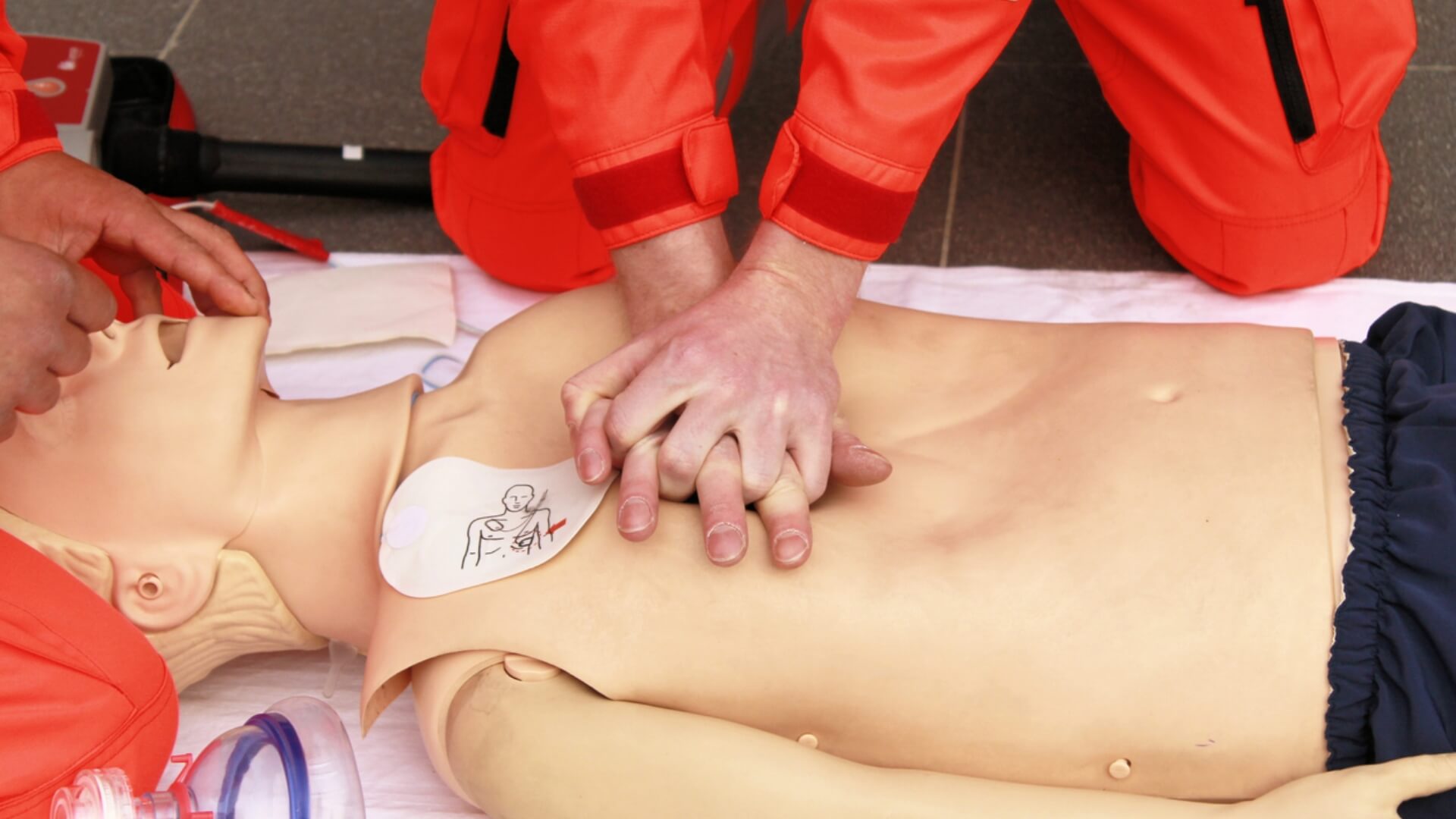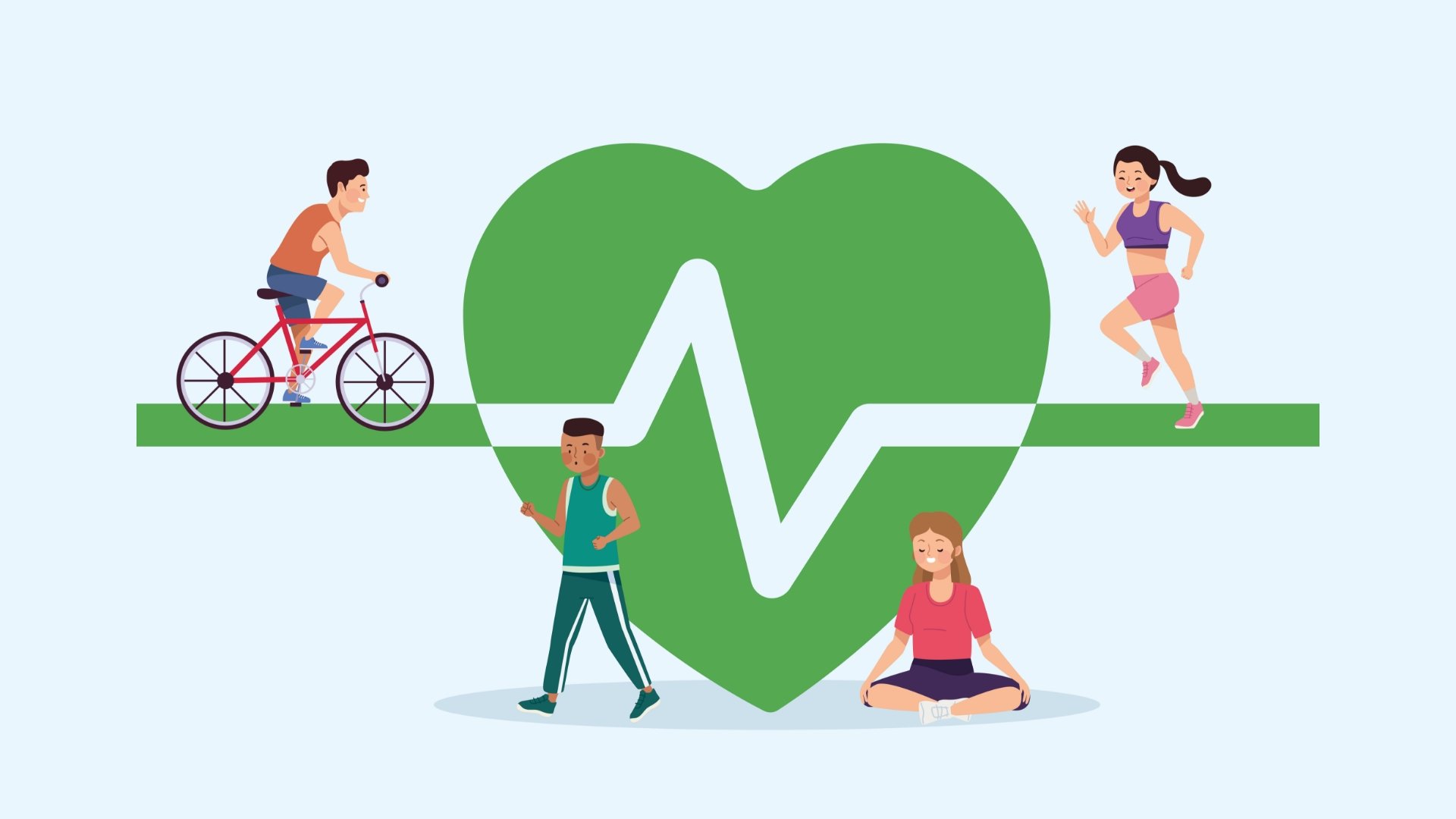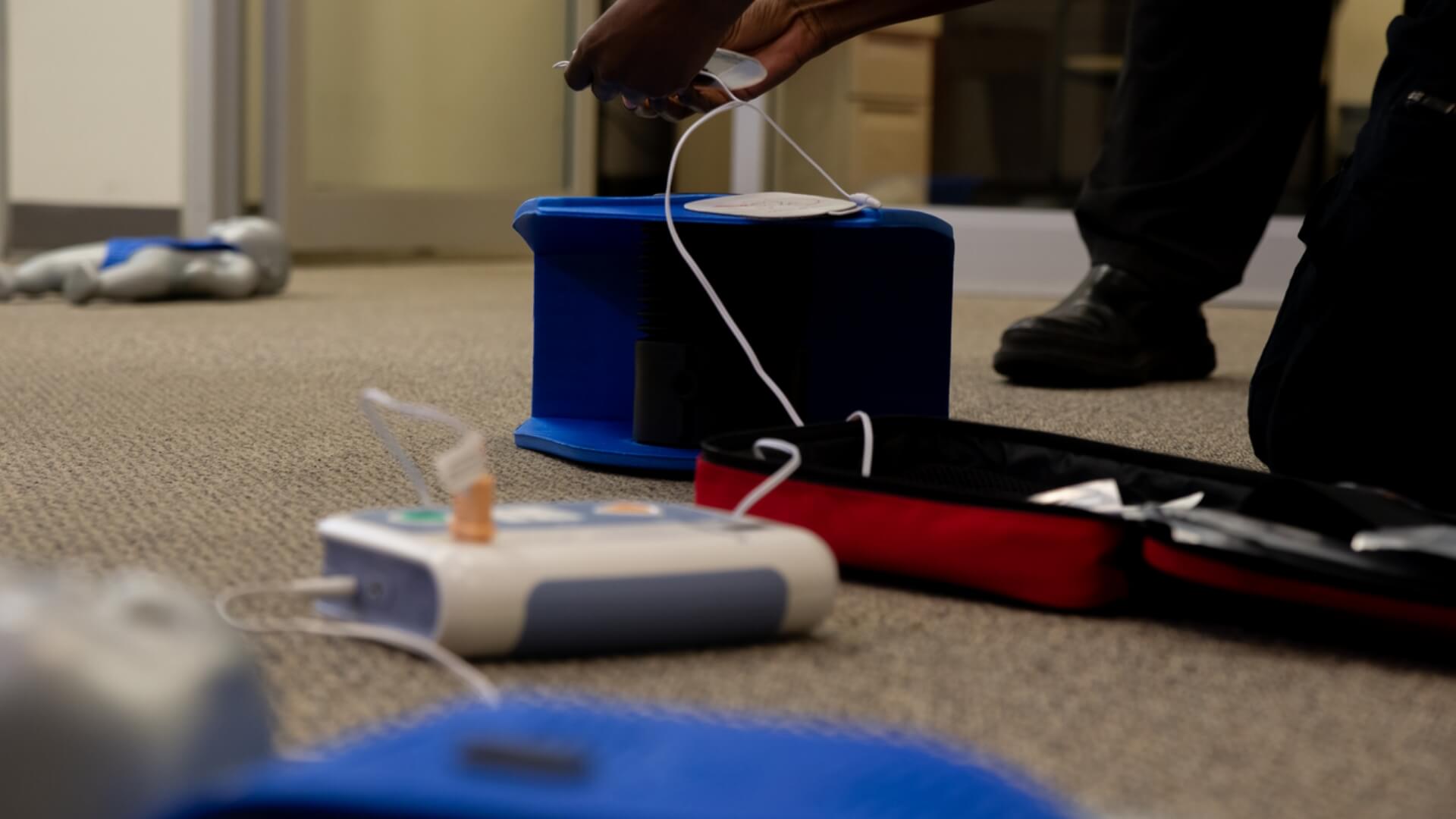Automated external defibrillators (AEDs) greatly boost survival chances in sudden cardiac arrest. Yet, many people aren’t sure what to do after the shock is given. Acting quickly after using the device is crucial. The right follow-up steps help the heart recover. They also ensure that the patient gets immediate care.
After an AED delivers a shock, knowing what to do next is key. This helps improve the victim’s chances of recovery. It also guides rescuers to respond quickly and effectively.
- Ensuring that emergency rescuers can provide the best possible care after the event.
- Readying your AED to be used again
The outcome of an emergency often hinges on those first moments. Quick action can change everything.
How do AEDs help in the case of cardiac arrest?
In sudden cardiac arrest, the heart’s electrical signals stop working. This leads to a chaotic rhythm known as ventricular fibrillation. Cardiac arrest is life-threatening and needs CPR right away. Unlike a heart attack, it can cause someone to collapse instantly. Acting fast can save a life.
Using an external defibrillator right away during cardiac arrest can restart the heart’s rhythm. Quick care boosts the chances of survival significantly.
What to do if you witness a cardiac arrest.
If someone collapses and isn’t breathing or responding, treat it like cardiac arrest. Act quickly. Call for help, use an AED if one is nearby, and begin firm chest compressions. For children, begin CPR immediately. Keep going for a few minutes before getting emergency help.
When an AED is nearby, attach the pads as shown on the device. Then, follow its voice prompts until help arrives. Most modern units, like the HeartSine Samaritan PAD 350P, have only a power and shock button. This design makes them simple to use, even in stressful situations.
If the heart rhythm normalizes.
The initial shock can restore a normal heartbeat and breathing, and the person may even wake up. Keep them calm while waiting for help. If the arrest happens again, keep the pads on. Follow the AED’s instructions until professionals arrive.
If the heart rhythm doesn’t normalize
Sometimes one shock won’t restore the heart’s rhythm. Keep the AED running, follow its instructions, and continue chest compressions. The device will reassess every two minutes and give another shock if required.
After the event
When the patient gets to the hospital, the AED program coordinator must manage the follow-up.
1. Fill out the event documentation.
In many areas, you must file post-event reports within a few days. This helps document the incident while keeping personal and medical details private. EMS teams rely on these reports to enhance survival outcomes. Program management providers often manage submissions. Yet, it’s essential to keep your own copy too.
2. Download the event data.
Some AEDs, like the HeartSine Samaritan PAD 350P and HeartSine Samaritan PAD 450P, can save up to 90 minutes of data. This includes ECG readings and shock times. After use, download this information. Then, forward it to the Medical Director if state regulations require it. Most states need medical oversight. So, it’s vital to check local guidelines to stay compliant.
3. Refurbish your AED to ensure it is response ready.
While we hope the AED won’t be needed again, another emergency is always possible. After each use, check the device. Replace the pads and kit items. Also, check or change the battery to keep it ready.
When responders arrive, they might swap your AED for theirs. Sometimes, they’ll take yours with the patient. If that happens, you’ll need to follow up with EMS or the hospital to have it returned.
4. Arrange for debriefing and counseling as needed.
After a cardiac emergency, the AED program coordinator should follow up with everyone who helped. They need to check if the procedures were followed and find ways to improve. Providing emotional support is also important. Events like these can be very stressful for everyone involved.
5. Keep your sacility up-to-date
After a cardiac arrest and AED use, some people pay more attention to training and device care. Others feel secure because it worked and think another emergency won’t happen.
Every day in the United States, thousands experience sudden cardiac arrest outside hospitals. Most do not survive. A timely shock can change the outcome. That’s why AEDs need regular maintenance. Responders should also stay trained and ready to act again if necessary.
How AED program management can help.
Using an AED can be stressful. It’s tough to know what to do next, especially if the victim is a colleague or a child you care for. AED Program Management handles the details before and after an incident. This makes the process easier and ensures it meets legal requirements.
- Medical prescriptions and ongoing medical oversight for AEDs.
- Keeping each AED up to date.
- Track pad and battery status. Get notifications when they’re low. Also, get help to order new supplies.
- Tracking CPR/AED training certifications for your staff as needed.
- Download EKG data, review physician events if needed, and handle all post-event paperwork.
- Comprehensive AED servicing covers several key steps. First, it involves inspecting the device. Then, pads, batteries, and responder supplies are replaced if needed. After that, the AED is fully tested and cleaned to ensure it is ready for use.
- Coordinating post-event needs across various states can be tricky. Each state has its own laws for AEDs.
What to do after using an AED: Recap
After an AED delivers a shock, keep it on and connected. It will track the heart and give you more instructions, like whether another shock is needed.
When emergency crews arrive, the AED program coordinator and responders handle the paperwork. They also make sure the device is serviced and ready for the next use.
The steps after an AED delivers a shock are just as important as those taken before and during its use..
FAQs
What should I do immediately after an AED shock?
Keep the AED on. Follow its voice prompts. Keep doing CPR until help arrives.
Can an AED deliver more than one shock?
Yes. If the heart rhythm does not return to normal, the AED will reassess and deliver extra shocks when needed.
Is it safe to touch someone while the AED is delivering a shock?
No. You must not touch the patient during a shock, but you can touch them safely while doing CPR between shocks.
How long should I continue CPR after using an AED?
Continue CPR until the person begins breathing normally or emergency responders take over.
What happens if the person wakes up after a shock?
Stay calm, track their condition, and wait with them until help arrives.
Conclusion
In a cardiac emergency, every second counts. Knowing what to do after an AED delivers a shock is as important as acting quickly in the first place. Stay calm, follow the device’s prompts, and keep providing care until help arrives. This gives the victim the best chance of survival. Regular training and good AED maintenance ensure you can act confidently when needed.



